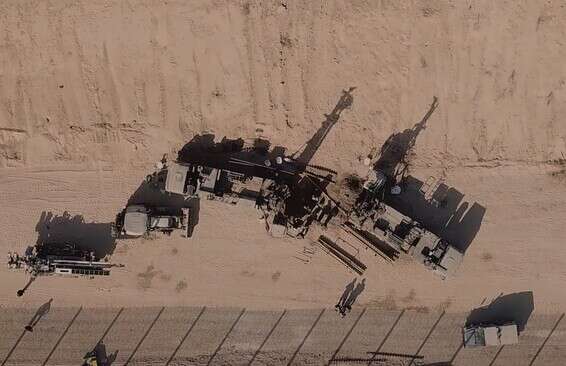The detection of the underground tunnel from Gaza into Israeli territory is the first operational success of the subterranean barrier built along the Gaza border.
This tunnel was pinpointed due to technological devices installed on the barrier, which detect digging activities or efforts to damage the barrier itself. From this perspective, this wasn't just a preventative operation, but also an event with deterrence implications. We can assume the tunnel was built to test the barrier, probe its capabilities and examine ways to bypass it. The fact that it was detected signals to the other side that it's now facing an extremely formidable challenge, which will require vast sums of money and resources if it wants to breach the barrier and penetrate Israeli territory.
Follow Israel Hayom on Facebook and Twitter
Along with this tactical-operational achievement, however, this event sheds light on two other matters: One is operative, and the second is strategic.
Operatively, it appears the terror organizations in Gaza (chief among them Hamas) haven't abandoned the tunnel idea. Despite the barrier – which should be completed in around five months – they believe they can dig and infiltrate Israel, and are determined to do so at almost any cost. Consequently, we could see efforts to dig deeper, even as deep as the aquifers, or shift the focus to the border between Gaza and Egypt, and from there dig into Israel in places where the barrier still hasn't been built.
Strategically, the event indicates that efforts are being made in Gaza to prepare for war. In recent months, the broad assessment within the defense establishment is that Hamas is weak and deterred, and does not want an escalation. The terrorist organization's actions on the ground have also been a testament: it didn't join the fighting after the assassination of senior Islamic Jihad terrorist Baha Abu Al-Atta last November, and has restrained itself following numerous incidents for which it has retaliated in the past. Hamas has also sought to promote ceasefire talks with Israel in any way possible.
These assessments are still valid. Hamas does not want a war and prefers a resolution that allows it to rehabilitate the Strip and provide calm and prosperity (relatively speaking; it is Gaza after all) to its residents. At the same time, however, Hamas is absolutely unwilling to abandon the idea of makawmeh, or resistance, which is the bedrock of its existence. And despite the lip service it is paying Egyptian mediators, the Qataris and the United Nations, Hamas was and remains a terrorist organization dedicated to the destruction of Israel.
Therefore, when Hamas digs tunnels, it is essentially signaling to its people and the public in Gaza that although it has perhaps altered its tactics its strategy remains the same – and that even if takes a while, it will return to its previous path.
To this end, it continues to invest in its rocket arsenal and other systems earmarked for use in a future war with Israel – which could very well erupt in the near-term without either side wanting it. After all, Gaza is Gaza, and is as combustible as ever – perhaps even more so because of the economic situation and the coronavirus outbreak there.
Israeli officials are cognizant of this volatility and are trying to stave off another round of fighting. Parallel to detecting the underground tunnel, defense officials are working vigorously to advance an array of civilian and humanitarian projects in Gaza to foster long-term peace and quiet. But no one is under any illusions: As per the old cliché, which always applies to the Middle East and was proven true again on Tuesday, he who wants peace (or even quiet), should prepare for war.
Subscribe to Israel Hayom's daily newsletter and never miss our top stories!




